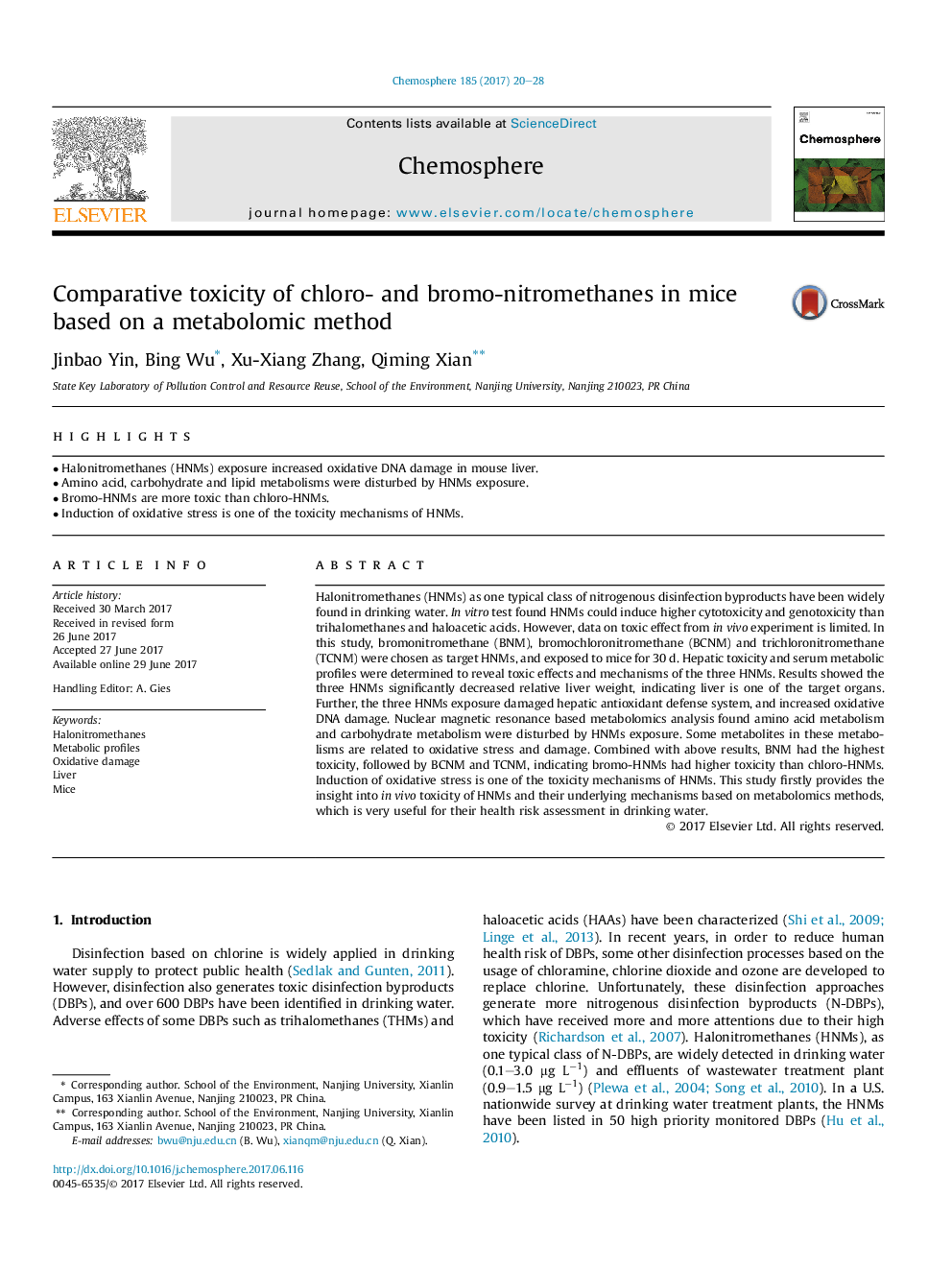| کد مقاله | کد نشریه | سال انتشار | مقاله انگلیسی | نسخه تمام متن |
|---|---|---|---|---|
| 5746730 | 1618786 | 2017 | 9 صفحه PDF | دانلود رایگان |
- Halonitromethanes (HNMs) exposure increased oxidative DNA damage in mouse liver.
- Amino acid, carbohydrate and lipid metabolisms were disturbed by HNMs exposure.
- Bromo-HNMs are more toxic than chloro-HNMs.
- Induction of oxidative stress is one of the toxicity mechanisms of HNMs.
Halonitromethanes (HNMs) as one typical class of nitrogenous disinfection byproducts have been widely found in drinking water. In vitro test found HNMs could induce higher cytotoxicity and genotoxicity than trihalomethanes and haloacetic acids. However, data on toxic effect from in vivo experiment is limited. In this study, bromonitromethane (BNM), bromochloronitromethane (BCNM) and trichloronitromethane (TCNM) were chosen as target HNMs, and exposed to mice for 30 d. Hepatic toxicity and serum metabolic profiles were determined to reveal toxic effects and mechanisms of the three HNMs. Results showed the three HNMs significantly decreased relative liver weight, indicating liver is one of the target organs. Further, the three HNMs exposure damaged hepatic antioxidant defense system, and increased oxidative DNA damage. Nuclear magnetic resonance based metabolomics analysis found amino acid metabolism and carbohydrate metabolism were disturbed by HNMs exposure. Some metabolites in these metabolisms are related to oxidative stress and damage. Combined with above results, BNM had the highest toxicity, followed by BCNM and TCNM, indicating bromo-HNMs had higher toxicity than chloro-HNMs. Induction of oxidative stress is one of the toxicity mechanisms of HNMs. This study firstly provides the insight into in vivo toxicity of HNMs and their underlying mechanisms based on metabolomics methods, which is very useful for their health risk assessment in drinking water.
Journal: Chemosphere - Volume 185, October 2017, Pages 20-28
